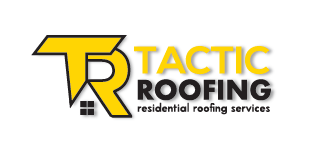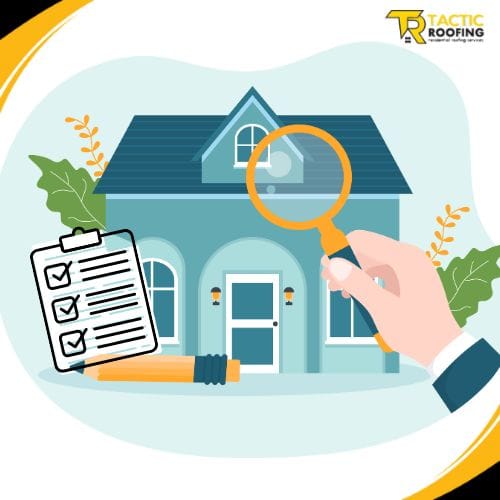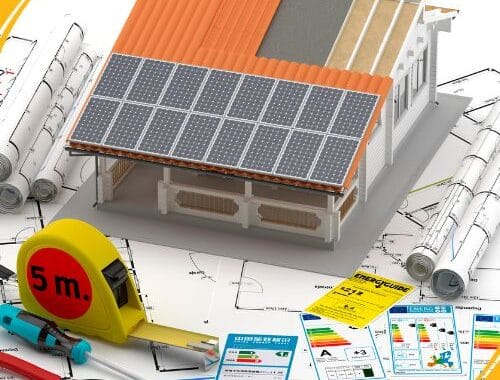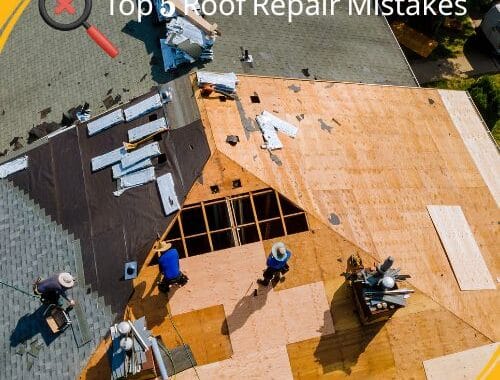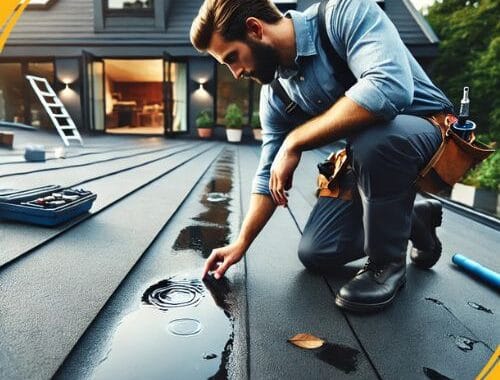When buying a new home, there’s a lot to think about—location, price, and the overall condition of the property. While it’s easy to get caught up in the aesthetics of the house, one of the most critical aspects you should never overlook is the roof. The roof is your home’s first line of defense against the elements, and any issues can lead to significant problems down the line. Conducting a thorough roof inspection before making a purchase can save you from unexpected repairs and costly roof problems.
In this guide, we’ll provide a comprehensive roof inspection checklist for new home buyers. Whether you’re conducting a preliminary check yourself or hiring a professional, these tips will help you identify potential issues and make informed decisions.
Why Roof Inspections Matter
A solid roof can last decades, but if not maintained, it can quickly degrade and cause serious issues, such as leaks, mold, or structural damage. Roof problems in new homes are not uncommon, especially if the previous owners neglected maintenance or if the roof was improperly installed. Identifying these issues before buying a house can save you from future headaches and repair costs.
Let’s dive into what to look for during your home buyer roof inspection and when it’s time to call in a professional.
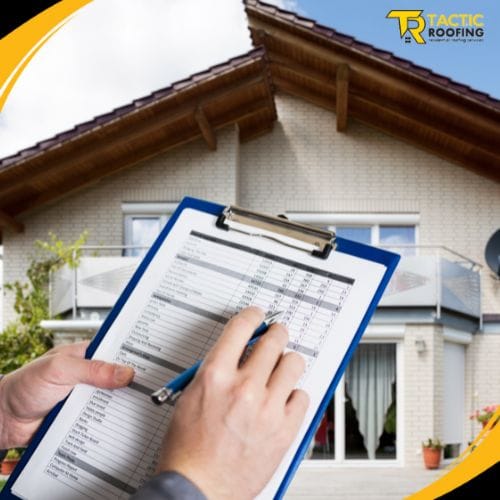
What to Look for During a Roof Inspection
A roof inspection doesn’t have to be daunting, but it does require careful attention to several key areas. Here are the main aspects you should focus on when inspecting the roof of a home you’re considering purchasing:
1. Roof Age
The first thing to determine is the roof’s age. Most roofs last between 20-30 years, depending on the material used. Asphalt shingles, the most common roofing material, generally last 20-25 years, while materials like metal or tile can last longer.
What to check:
- Ask the seller or real estate agent for the roof’s age.
- Look for signs of wear and tear, such as curling or cracked shingles, which can indicate an aging roof.
If the roof is nearing the end of its life span, factor in the cost of replacement when considering your offer.
2. Shingle Condition
The condition of the shingles is one of the clearest indicators of a roof’s health. Damaged shingles can lead to water infiltration, which can cause internal damage to the home’s structure.
What to check:
- Look for missing, cracked, or curling shingles.
- Check for shingles that appear darker or “wet,” as this can signal moisture issues.
- Inspect the shingles for granule loss. Granules protect the shingles from UV damage, and their absence can lead to faster deterioration.
If you notice widespread shingle damage, it may be necessary to consult a professional for a more detailed evaluation.
3. Flashing and Seals
Flashing is used around roof penetrations such as chimneys, skylights, and vents to prevent water from seeping into the home. Properly installed and well-maintained flashing is crucial to preventing leaks.
What to check:
- Examine the flashing for cracks, rust, or gaps.
- Ensure the seals around chimneys, vents, and skylights are intact and free of damage.
Damaged or poorly installed flashing can be a major cause of roof leaks. If the flashing looks compromised, it’s time to consider professional repair.
4. Gutters and Downspouts
The gutter system plays an important role in diverting water away from the roof and foundation. Clogged, damaged, or improperly installed gutters can lead to water buildup and potential roof damage.
What to check:
- Inspect the gutters for signs of clogging, such as debris buildup or plant growth.
- Check for sagging or detached gutters, which can indicate that the system is overwhelmed by water.
- Ensure that downspouts direct water away from the home’s foundation to prevent moisture damage.
For more detailed tips on keeping gutters in top shape, you might want to explore our guide on Roof Cleaning.
5. Roof Valleys
Roof valleys are the points where two slopes of the roof meet. They are critical for directing water flow off the roof, and any issues here can lead to leaks and water damage.
What to check:
- Look for cracked or missing shingles in the valleys.
- Check for signs of rust or damage to the metal flashing in these areas.
- Ensure there are no signs of water pooling, as this can signal drainage problems.
6. Sagging Roof
A sagging roof is a major red flag and can indicate serious structural issues with the home. While this can sometimes be due to natural settling, it’s often a sign of deeper problems such as water damage, poor roof installation, or weakened supports.
What to check:
- Look at the roofline from a distance. It should appear straight and level. Any noticeable sagging is a cause for concern.
- If the roof is sagging, schedule an immediate inspection with a professional roofer to assess the severity.
7. Attic Inspection
Inspecting the attic can reveal a lot about the roof’s condition, especially if there are unseen leaks or poor ventilation.
What to check:
- Look for signs of water damage, such as stained wood or mold.
- Check for light coming through the roof boards, which indicates gaps in the roof.
- Ensure the attic is properly ventilated. Poor ventilation can lead to moisture buildup and mold growth, damaging both the roof and the home’s structure.
8. Moss and Algae Growth
Moss and algae can be more than just unsightly; they can damage your roof over time by trapping moisture and causing shingles to deteriorate.
What to check:
- Look for green or black patches on the roof. These are usually moss or algae growth.
- Check for any signs of moisture retention, as moss tends to hold water, leading to potential damage.
If moss or algae are present, professional roof cleaning may be required to prevent further issues. For more information on keeping your roof clean, read our detailed guide on Roof Repair.
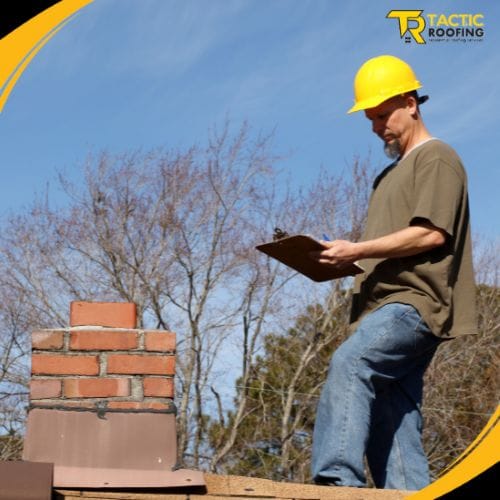
Common Roof Red Flags to Watch For
While conducting a home buyer roof inspection, you may come across certain issues that should raise concern:
- Widespread shingle damage: If a significant portion of the shingles is damaged or missing, this may require immediate repair or replacement.
- Sagging roof: A sagging roof can signal structural problems that need to be addressed by a professional.
- Water stains in the attic or ceiling: This indicates a current or past leak that may have caused damage to the home’s interior structure.
- Poor ventilation: Poor attic ventilation can lead to mold, mildew, and excessive heat buildup, all of which can shorten the lifespan of the roof.
When to Request a Professional Inspection
While a DIY inspection can help you catch obvious issues, a professional inspection will offer a more comprehensive assessment. A certified roofer will be able to:
- Identify hidden problems that aren’t visible to the untrained eye.
- Provide a detailed report on the roof’s overall condition.
- Estimate the remaining life span of the roof and suggest necessary repairs or replacements.
It’s always a good idea to get a professional inspection, especially if the roof is older or if you spot any red flags during your initial inspection.
Conclusion
A thorough roof inspection is a crucial step for anyone considering buying a new home. From checking the shingles and flashing to inspecting the attic and gutters, knowing what to look for can help you avoid costly repairs in the future. And if you spot any issues or are unsure about the roof’s condition, don’t hesitate to call in a professional.
Taking the time to inspect the roof before closing on a home can give you peace of mind and ensure that your new house is a safe, secure, and valuable investment.
Before you make a final decision, consider reviewing our in-depth guides on Roof Repair and Roof Cleaning to learn more about maintaining your future home’s roof!
